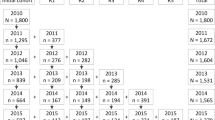Abstract
The purpose of this study was (a) to assess the concerns of restaurant representatives about a city ordinance that prohibited smoking in all restaurants prior to its enactment and (b) to determine if these concerns were realized 15 months after the ordinance had been in effect. Representatives from 34 randomly selected restaurants participated in both the pre- and post-interviews. Although 26.5 percent of the respondents were concerned that the ordinance would be difficult to enforce, 94 percent found the ordinance easy or very easy to enforce. While some customers appeared to have negative reactions to an ordinance that prohibited smoking, four times that many appeared to have positive reactions to the ordinance. Although approximately 12 percent of the respondents indicated that the ordinance had “a slightly negative effect on employees,” the majority (88.2%) felt that the ordinance had either no effect or a positive effect on employees. Most respondents believed that the ordinance would have no effect on their business and most reported that the ordinance had no or no known effect on business. Although many restaurant representatives had concerns about a non-smoking ordinance prior to its enactment, restaurant representatives' self-reported experience with the ordinance suggests that most of these concerns were not realized.
Similar content being viewed by others
References
World Health Organization.It Can Be Done; A Smoke Free Europe. Report of the First European Conference on Tobacco Policy, Madrid, November 7–11. WHO Regional Publications European Series, No. 30, 1988.
U.S. Surgeon General.The Health Consequences of Involuntary Smoking. U.S. Department of Health and Human Services, DHHS Pub. No. (CDC) 87-8398. Washington, D.C.: U.S. Government Printing Office, 1986.
National Research Council.Environmental Tobacco Smoke: Measuring Exposures and Assessing Health Effects. Washington, D.C.: National Academy Press, 1986.
Environmental Protection Agency.Respiratory Health Effects of Passive Smoking: Lung Cancer and Other Disorders. EPA/600/6-90/006F, Washington, D.C., 1992.
Rigotti, N. Trends in the adoption of smoking restrictions in public places and worksites.N Y St. J. Med. 89:19–26, 1989.
Arizona Daily Sun, “Smoke clears tomorrow,” p. 1, March 28, 1993.
Arizona Daily Sun, “Businesses ready for smoking ban,” p. 1, June 17, 1993.
Arizona Daily Sun, “Smoking ban revisited,” pp. 1 and 4, July 18, 1993.
Arizona Daily Sun, “Not coming back,” p. 6, September 4, 1993.
Arizona Daily Sun, “Where there's no smoke, there's fire in Flagstaff: Cigarette ban hurts eateries, owners complain,” pp. B1 and B3, July 18, 1993.
Corchado, A. “Arlington eateries booming despite anti-smoking law.”The Dalls Morning News, pp. 1 and 34A, November 11, 1994.
Sedona Red Rock News, “City Council delays vote on smoking ban,” p. 1, July 30, 1993.
The Arizona Republic, “LA restaurateurs block smoking ban,” p. A12, July 25, 1993.
Samuels, B. and Glantz, S. The politics of local tobacco control,J Amer Med Assoc 266:2110–2117, 1991.
Sciacca, J. and Eckrem, M. Effects of a city ordinance regulating smoking in restaurants and retail stores.J of Com Hlth 18:171–182, 1993.
National Restaurant Association.Smoking in Restaurants: A Consumer Attitude Survey. National Restaurant Association Research Department, 1200 Seventeenth Street N.W., Washington D.C., February 1993.
Taylor Consulting Group.A Study of the Economic Impacts on San Luis Obispo Restaurants and Bars. 6835 Avila Valley Drive, San Luis Obispo, California, January 1993.
Farkas, D. Failure rate better than expected.Rest Hosp, March, vol. 60, 1992.
Americans for Non-smokers' Rights.100% Smoke-free Ordinances. 2530 San Pablo Avenue, Suite J, Berkeley, California 94202, 1995.
Author information
Authors and Affiliations
Additional information
This study was supported by the Center for Prevention and Health Promotion, Arizona Department of Health Services. The author acknowledges Lori Rawlins for her assistance in collecting and collating the data. David Dube, MPH and Marty Eckrem, MPH of the Coconino County Department of Public Health and John Meyers, PhD, Director of the School of Hotel and Restaurant Management at Northern Arizona University are thanked for their assistance in developing the questionnaires and designing the study.
Rights and permissions
About this article
Cite this article
Sciacca, J.P. A mandatory smoking ban in restaurants: Concerns versus experiences. J Community Health 21, 133–150 (1996). https://doi.org/10.1007/BF01682304
Issue Date:
DOI: https://doi.org/10.1007/BF01682304




